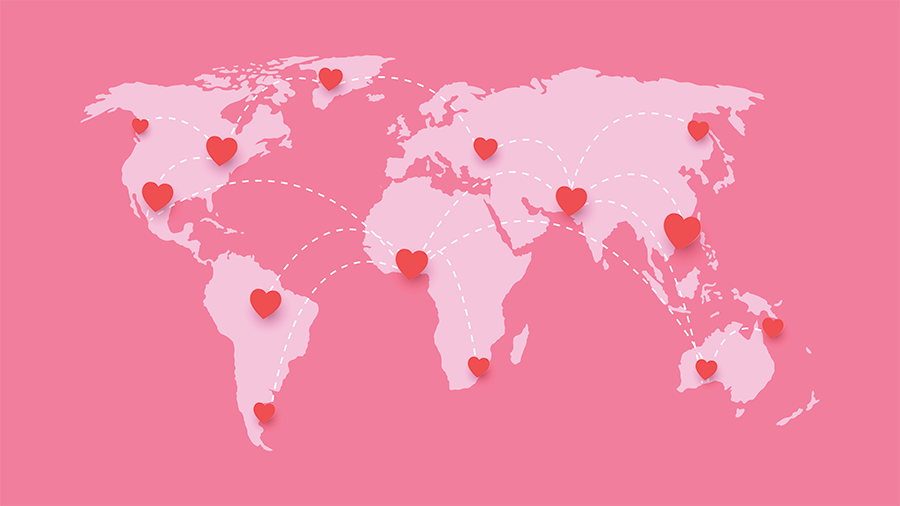
Wedding traditions from around the world
Weddings are a universal celebration of love, yet the way they’re honored is as unique as the cultures they stem from. Across the globe, couples and families incorporate rituals that carry meaning, symbolizing unity, prosperity and joy. In the United States, many wedding traditions borrow from centuries of global influence. The classic white dress, popularized by Queen Victoria in the 19th century and symbolizing purity and new beginnings, is a staple for many brides. Exchanging rings—a practice rooted in ancient Rome—signifies an eternal bond. The tossing of the bouquet and garter stems from medieval Europe but has become a lighthearted highlight of American receptions. Here are 12 unique wedding traditions that highlight the diversity of love and commitment across the globe.
India: Mehendi Ceremony
Before the wedding, Indian brides partake in the Mehendi ceremony, where intricate henna designs are applied to their hands and feet. It is believed that the darker the henna stain, the deeper the love the bride will receive.
Peru: The Cake Pull
In a lively Peruvian tradition, single women participate in a cake-pulling ritual. Ribbons are baked into the wedding cake, each with a charm, and the woman who pulls the ribbon with a hidden ring is believed to be the next to marry.
Greece: The Groom’s Shave
A Greek groom places his trust in his “koumbaros” (best man) for a symbolic shaving ritual on his wedding day. This act of trust is followed by friends feeding the groom honey and almonds, a gesture meant to ensure a sweet start to his marriage.
South Korea: Symbolic Ducks
In South Korea, grooms traditionally gift their brides with wooden ducks or geese, symbolizing fidelity. These birds, known for their lifelong pairings, represent the steadfast commitment expected in marriage.
Hungary: The Midnight Change
At midnight, Hungarian brides transition into their role as wives by changing into a vibrant red dress called a “menyecske ruha,” symbolizing their shift from bride to married woman.
South Africa: Lighting the Hearth
In some South African cultures, the bride and groom’s families each bring fire from their hearths to light a new fire in the couple’s home, symbolizing the union of two families and the creation of a shared future.
Finland: The Bridal Sauna
Finnish brides take part in a pre-wedding sauna ritual alongside their closest friends and family, symbolizing purification and preparation for the new chapter ahead.
Venezuela: The Great Escape
Venezuelan couples are said to bring good luck to their marriage if they manage to sneak away from the reception without anyone noticing. Adding to the fun, the first guest to realize the couple is missing is also believed to receive good fortune.
Germany: Teamwork in Action
In Germany, newlyweds saw a log in half together as part of their wedding day. This shared effort represents the couple’s ability to overcome challenges as a team.
Mexico: The Wedding Lasso
A Mexican wedding often features a lasso—a long, decorative cord or rosary—placed around the couple’s shoulders in the shape of a figure eight. This symbolizes eternal unity and shared faith.
Czech Republic: A Baby Blessing
Before a Czech wedding, a baby is placed on the couple’s bed to symbolize fertility and blessings for future children.
Philippines: Doves in Flight
In the Philippines, newlyweds release a pair of doves during their ceremony, symbolizing peace, prosperity and harmony in their marriage.
